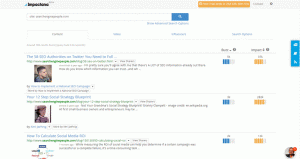Some business leaders see a natural adversary in Shawn Fain, president of the striking United Auto Workers (UAW). But with labor winning the messaging war, I believe CEOs would be wise to study Fain’s command of the art of executive communications.
As someone who’s advised CEOs on communications for the past decade and a half, I’ve witnessed the challenges they face trying to connect with people whose lives and pay are vastly different from their own. It’s simply easier for Americans to relate to a middle-class worker than an executive.
But Fain hasn’t succeeded simply because of the inherent advantage labor has in securing public sympathy. After all, the last two UAW presidents were sentenced to prison for corruption. Rather, Fain dedicated himself to presenting a fresh new face of leadership. The first UAW president elected directly by members, he campaigned on transparency and a promise to fight for his members. Since taking office, his communications have only reinforced that image.
So far, polling shows the public is on labor’s side, and the executives of the Big Three automakers are increasingly expressing open frustration with the UAW’s tactics. How did Fain steer his workers to such widespread support and a commanding bargaining position?
First, Fain uses powerful symbolic gestures to deliver his messages. For at least six decades, contract negotiations started with public handshakes between union and auto leaders. Fain said he wouldn’t shake hands with them until a deal was made. He literally threw a Stellantis proposal into a trash can. He renamed the union’s proposal from the “President’s Demands” to the “Members’ Demands” and shared it publicly.
These acts have zero financial cost, but appeal to striking workers and are primed for media coverage. They’re the right type of communications for a leader to employ early in their tenure because—unlike major organizational and directional changes—they’re quick and easy to execute.
Second, Fain has cast a broad, inclusive narrative about what the UAW is fighting for. “For too long, our past leaders have been silent. We can’t sit back and let the companies continue to control the dialogue and define the issues and ultimately label us as the greedy union workers,” Fain recently said. “We have to change the narrative by using facts, and we have the facts on our side.”
There are about 150,000 UAW members at Detroit’s Big Three. That’s less than half of the 340,000 teamsters who recently signed a new contract with UPS. Fain, however, casts the auto industry battle as one component of a larger war on the middle class, and the UAW as leading the effort to right the wrongs of the past 15 years.
He also expands the timeframe to create a sense of historical mission. A typical contract lasts for four years, but Fain describes it as “our generation’s defining moment.”
“This is about us doing what we got to do to take care of the working class,” Fain said recently. “This isn’t just about the UAW. This is about working people everywhere in this country.”
Finally, Fain takes every opportunity to share his messages himself. “This is not your grandfather’s UAW,” analyst Daniel Ives told Reuters, as part of its analysis of how effectively the new UAW regime has used social media apps Facebook, Instagram, and X (formerly Twitter). “Fain is playing this like a chess player. He’s leading 21st-century negotiations for unions,” he explains. In particular, Fain has used videos to form a more intimate connection with his members and the wider public.
Further, Fain publicly shares specific bargaining details, which traditionally were kept behind closed doors. Generally, it is considered unwise to negotiate in the media because it reduces flexibility and can make a compromise look like a loss. But Fain is willing to take that chance to win his members’ trust.
Of course, there are risks to such an aggressive approach. Some may argue that demonizing CEOs as greedy billionaires could make it harder to reach agreement, and even harder for both sides to work together when the strike ends. But for now, Fain has demonstrated that throwing the old playbook out the window is a smart strategy.
“We live in an era of tremendous facts,” Henry Ford wrote in 1923. “Our job is to understand them, to recognize their presence, to learn if we can what they signify, and not to fall into the error of minimizing facts because they have a bitter flavor.”
A century later, CEOs shouldn’t let the “bitter flavor” of the messenger deter them from understanding strategies and tactics that clearly work.
Here are the lessons that I believe CEOs could learn from Fain:
1. Express your goal as tightly as possible. Fain’s message is clear and memorable. For instance, Fain uses clear phrases like “Record profits mean record contracts.” Write down your goal, then keep removing words and turning up the tension until your message is unforgettable.
2. Don’t let a charge go unanswered. When Big Three executives have criticized Fain, he has responded quickly. On Facebook Live, Ford CEO Jim Farley said Fain was on TV more than Jake from State Farm. Fain replied, “Like a good neighbor, we’re available 24/7” to negotiate a fair contract.
3. Communicate in ways that reinforce your message. Fain is working to shift power to union members, so he chose communications channels that emphasize openness and interaction. Trying to show you’re a hands-on leader? Get off Zoom and walk the factory floor.
4. Deliver quickly on what got you the job. Fain was elected to shake up the union leadership. He started doing so immediately, using symbolic actions when he wasn’t able to take substantive ones. If you’re hired or promoted to accomplish something specific for the company, rack up some quick wins—even if they are only symbolic.
Pete Weissman is the chief executive officer of Thought Leader Communications. He advises Fortune 500 leaders on presentations, speechwriting, thought leadership, and media training.
(2)







